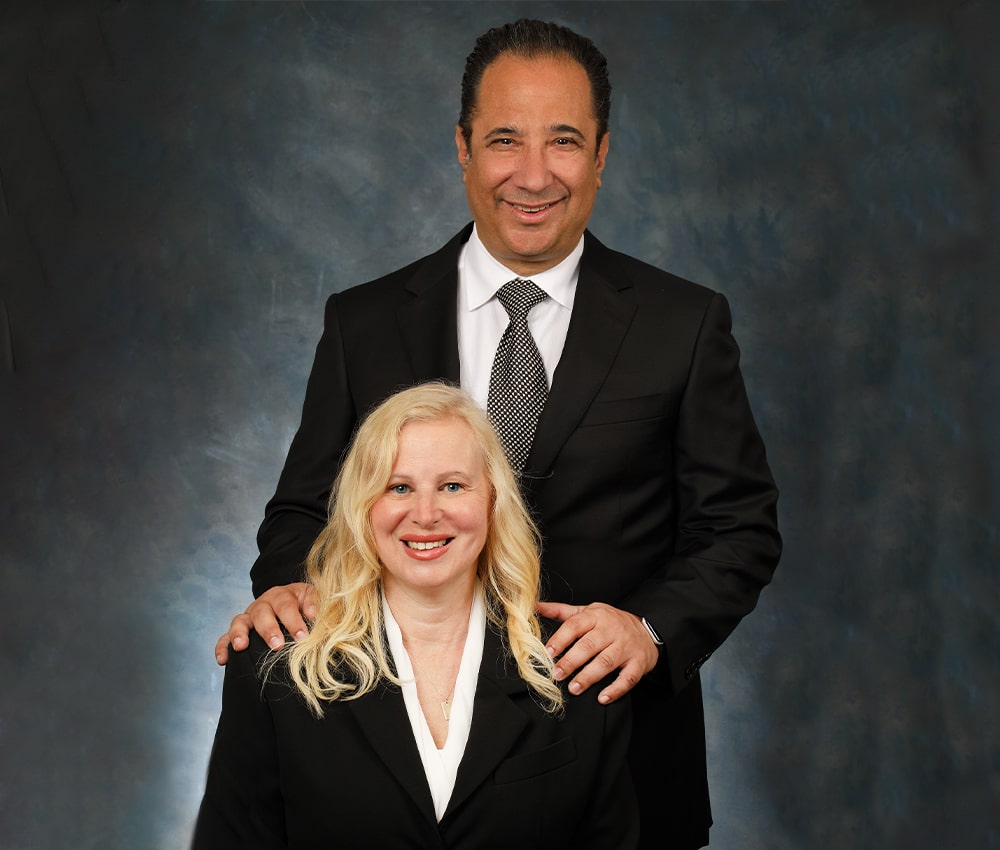 call us: (905) 456 9969
call us: (905) 456 9969 call us: (905) 456 9969
call us: (905) 456 9969
A no fault divorce is exactly what it sounds like - a divorce where neither party has to prove that the other person was responsible for the separation. Gone are the days when you had to collect evidence and accuse your spouse of wrongdoing to file a divorce. Things have become simple now, you and your partner just have to cite that your marriage has "irreconcilable differences" or has suffered an "irretrievable breakdown."
So, for those who would like to walk away from their marriage without reliving painful moments, this is the best step to take. No blame, no accusations – just the right way to forget the past and move forward.
However, you must know the details in depth and about how it actually works. So, here we are with the complete so you can know if it’s the right choice for you.
Here is exactly how does an uncontested divorce works:
In the first step, only one spouse has to be involved, known as the petitioner - a person who will be responsible for filing a divorce petition with the court. As this petition does not require any blaming of the other party, it simply states that the marriage is no longer viable. This divorce is the right way to focus on peace of mind rather than making things more complicated by playing a blame game. Just when the petition gets filed, the other spouse is sent a notification and then the legal process begins.
Once the divorce petition is filed, the other partner, also known as the respondent, gets the opportunity to respond. They have two options - either agree to the divorce or contest it. However, things are processed more seamlessly if both of them agree on the terms of the divorce. In cases when there are disagreements – such as about property division, child custody, or spousal support—the process may take longer. In contested cases, the court may intervene to resolve the disputes. Regardless of disagreements, no one needs to prove wrongdoing, and the court will focus on resolving the logistical matters fairly.
If spouses struggle to agree on key issues, mediation is often a helpful next step. Mediation involves a neutral third party, known as the mediator, who helps both spouses work through disagreements in a non-confrontational setting. Unlike a judge, the mediator facilitates discussion, helping both spouses negotiate terms like property division, child custody, and parenting time. This process allows for mutual agreements to be made without going to court. Mediation can be especially valuable when both spouses wish to maintain a civil relationship, particularly when children are involved. It helps save time, reduces legal fees, and preserves cooperation.
Once all terms are agreed upon—through negotiation, mediation, or court decisions—the final step is for the court to issue the final divorce decree, which legally ends the marriage. If the divorce is uncontested and all terms are agreed upon, the process can be relatively quick, with the court reviewing and approving the terms. However, if there are unresolved issues, such as asset division or custody, a trial may be necessary. Despite contested issues, no fault divorce keeps the focus off assigning blame. The court will make fair decisions based on the best interests of both spouses and any children involved, and finalize the divorce.
Divorce is never easy, but the no fault divorce process helps to make it a little easier by removing the need for blame. While the emotional challenges aren’t entirely erased, a no fault divorce allows both partners to step away from the relationship without further fueling the fire of resentment. It’s an opportunity to begin again—freed from the past and looking toward the future.
If you’re considering an uncontested divorce, it’s important to talk to a legal professional like Rutman & Rutman Professional Corporation, who can help guide you through the process and ensure that your rights and interests are protected. Regardless of how you look back on your journey; the goal remains the same: a new chapter in your life, free from the complexities of fault.
Getting sick is an unavoidable part of life. No one knows when they have to leave all their work and take time off due to illness. But for people living in Ontario, things are different when it comes to sick days. People there often have these questions running through their minds - Am I entitled to sick leave? Will I get a paid leave? What if my leave request gets disapproved? And more So, we are here to answer all your questions. No matter if you are a full-time worker, doing part-time, or just working under a contract, it is crucial for you to understand your rights and obligations regarding sick days in Ontario. If you know what to expect during your hard days will help you to plan things without stress and you are sure to receive fair treatment. Are Sick Days Paid in Ontario? That one question every...
Read MoreBeing a common law partner in Ontario, you might think that your relationship mirrors that of a married couple. However, the legal realities have a different story to tell. Here is what you need to know – even though love may bind you, the law operates differently for conjugal partners. Through this blog, we will break down the crucial distinctions between married and common law status. Knowledge is power, so we'll unravel the essential rights, equipping you to make informed decisions. So, are you ready to get started? Well, here we go. What is a Common Law Partner? A common law partner is a person with whom you share a domestic and committed relationship but without being married legally. Even though these partners share responsibilities like parenting and finances, their legal rights are not equivalent to those of married couples. For instance, conjugal partners do not automatically have rights to...
Read MoreMarriages are commitments that are supposed to last forever, but sometimes, things do not turn out as you plan, and that’s completely fine. In Ontario, when a relationship reaches its breaking point, couples have two legal options to choose between - divorce or annulment. How do you know which one to choose? To make it simpler for you to understand here is the major difference between these two– a divorce is like returning a product you used but no longer want, while an annulment is like saying the product was faulty and shouldn’t have been sold in the first place. Now, let's delve deeper to know the key differences and help you figure out the best way forward! What Is a Divorce? Divorce can be explained as a legal process for putting an end to a valid marriage. This means that the couple, who has now decided to part ways...
Read More
Being a common law partner in Ontario, you might think that your relationship mirrors that of a married couple. However, the legal realities have a different story to tell. Here is what you need to know – even though love may bind you, the law operates differently for conjugal partners. Through this blog, we will break down the crucial distinctions between married and common law status. Knowledge is power, so we'll unravel the essential rights, equipping you to make informed decisions. So, are you ready to get started? Well, here we go. What is a Common Law Partner? A common law partner is a person with whom you share a domestic and committed relationship but without being married legally. Even though these partners share responsibilities like parenting and finances, their legal rights are not equivalent to those of married couples. For instance, conjugal partners do not automatically have rights to...
Read More
Marriages are commitments that are supposed to last forever, but sometimes, things do not turn out as you plan, and that’s completely fine. In Ontario, when a relationship reaches its breaking point, couples have two legal options to choose between - divorce or annulment. How do you know which one to choose? To make it simpler for you to understand here is the major difference between these two– a divorce is like returning a product you used but no longer want, while an annulment is like saying the product was faulty and shouldn’t have been sold in the first place. Now, let's delve deeper to know the key differences and help you figure out the best way forward! What Is a Divorce? Divorce can be explained as a legal process for putting an end to a valid marriage. This means that the couple, who has now decided to part ways...
Read More
Workplace harassment is an issue that affects countless individuals across industries and job roles. It can disrupt professional environments, damage personal well-being, and impede career growth. Surprisingly, according to the Canadian Labour Congress, the following has been reported in just the past two years: 65% of respondents reported experiencing a form of non-sexual harassment and violence 43.9% of respondents reported experiencing at least one form of sexual harassment and violence while at work 26.5% of respondents reported experiencing at least one form of work-related online harassment In such situations, the expertise of employment lawyers can be invaluable. This article explores what workplace harassment entails, the various forms it takes, and how employment lawyers can assist victims in achieving justice and restoring a healthy work environment. What is Workplace Harassment? Workplace harassment refers to any unwelcome behavior, conduct, or communication directed at an employee that creates a hostile, intimidating, or...
Read More

Are you stuck with a legal issue? Don't navigate the complexities alone! Turn to our top-rated lawyers for expert guidance and support, ensuring you make informed decisions every step of the way!